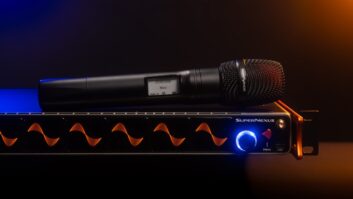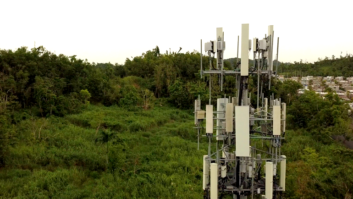Bellevue, WA (January 9, 2018)—T-Mobile kicked off the New Year with an announcement that its new 600 MHz services are now live in 586 cities and towns across 28 states, and that it will be launching more than a dozen new 600 MHz capable smartphones in 2018. As a result, more audio pros operating wireless gear in the 600 MHz service band will be affected and face considerable fines if they continue to use that range of spectrum.
T-Mobile states that it has nearly tripled its LTE coverage since 2015 and surpassed its aggressive commitment to reach 321 million people with LTE in 2017. The carrier announced that it “has significantly expanded its LTE network to cover 322 million people, up from 315 last year, bringing coverage to entirely new places.”
T-Mobile acquired 31 MHz of the 600 MHz spectrum licenses made available by the FCC’s Incentive Auction, which ended in April 2017. The carrier sought the spectrum because it allows it to “cover every single American with low-band spectrum, which travels twice as far and is four times better in buildings than mid-band spectrum.”
The downlink and uplink blocks of the new 600 MHz service band being built out by auction-winning licensees including T-Mobile extend across 617-652 MHz and 663-698 MHz respectively, separated by the duplex gap, which offers only restricted access to RF audio gear. Anyone operating wireless audio equipment in the 600 MHz service band must cease operation as soon as the new licensees begin their operations. Per 47 U.S. Code § 503, the FCC may impose a fine on anyone who continues to operate in the relevant spectrum of “$10,000 per violation or per day of a continuing violation and $75,000 per any single act or failure to act.”
Late last year, Dan Wilson, senior manager spectrum engineering, T-Mobile, reported that the carrier’s tests have demonstrated several scenarios in which its equipment and wireless mics can interfere with each other. A wireless mic will cause interference to the T-Mobile base station in the uplink spectrum and, in a venue, a consumer wireless handset could cause interference to a wireless microphone receiver. T-Mobile is concerned about wireless mic interference directly into handsets in the downlink spectrum, and interference from the carrier’s downlink base station (which operates at 40W plus antenna gain) into wireless audio equipment receivers is also a concern.
Activity at any location will be dependent on the number of 600 MHz consumer handsets in use. While there are currently only two 600 MHz handsets on the market, T-Mobile’s latest announcement suggests that could significantly increase during the coming year.
According to Neville Ray, chief technology officer for T-Mobile, “We’re just getting started with the 600 MHz low-band spectrum we’re rolling out now, and it’s a wide-open highway for customers, increasing coverage, capacity and in-building reach.”
See the complete list of cities and towns now covered by T-Mobile’s 600 MHz services.
T-Mobile • T-Mobile.com/coverage




